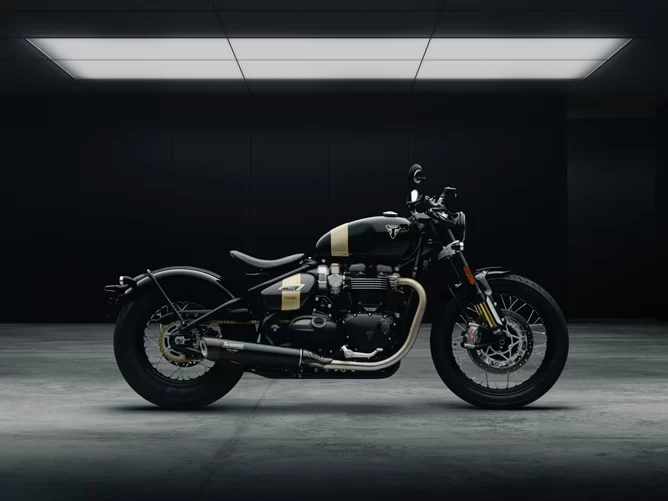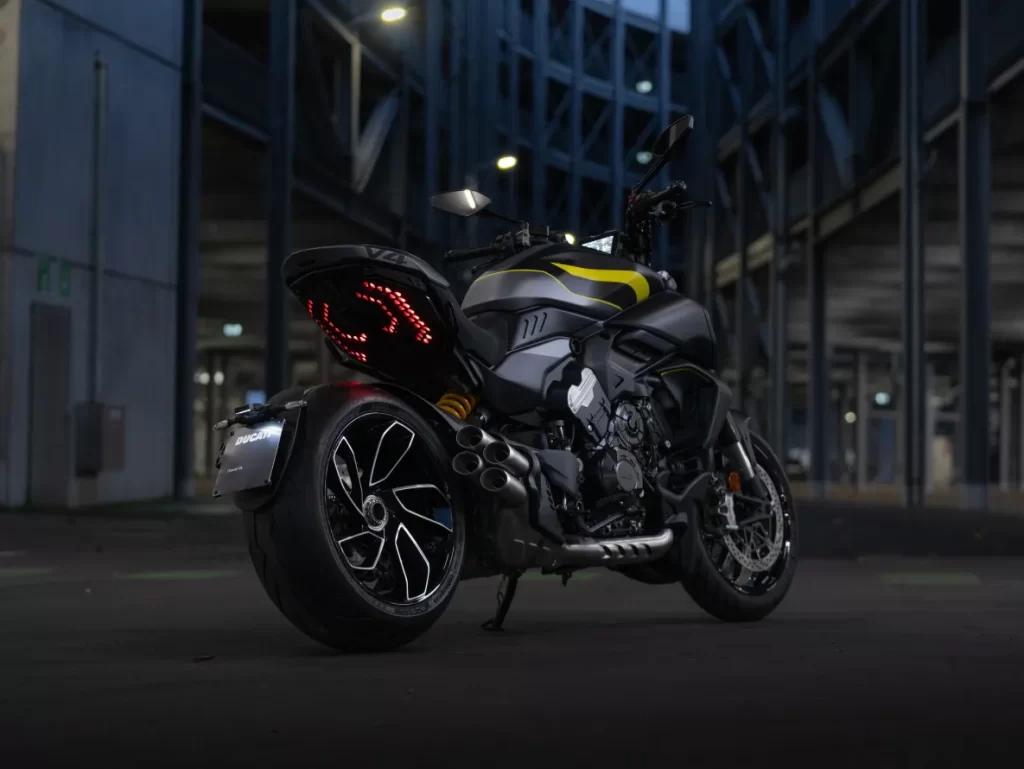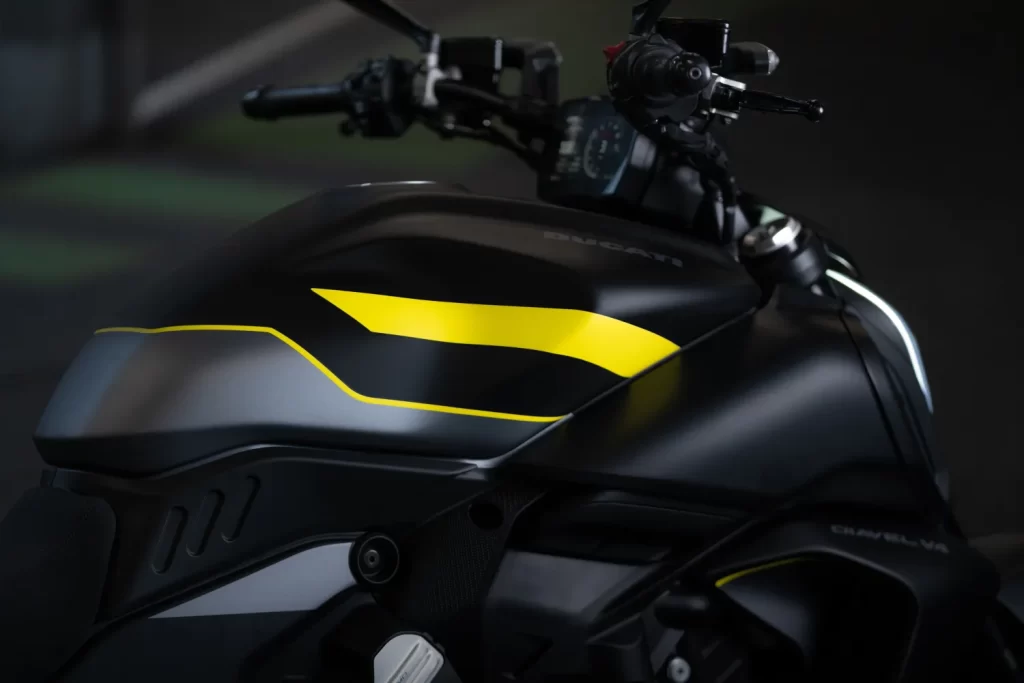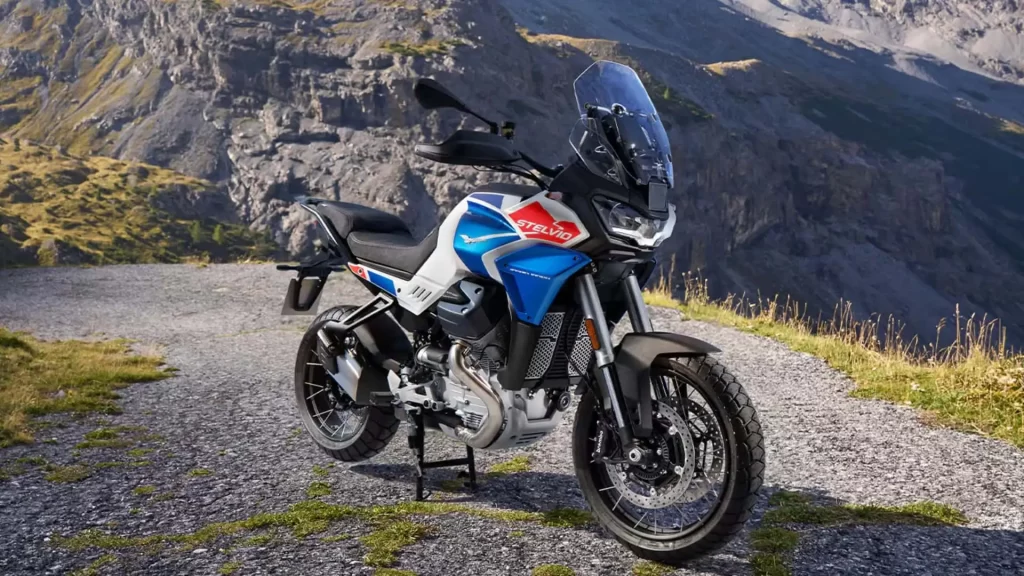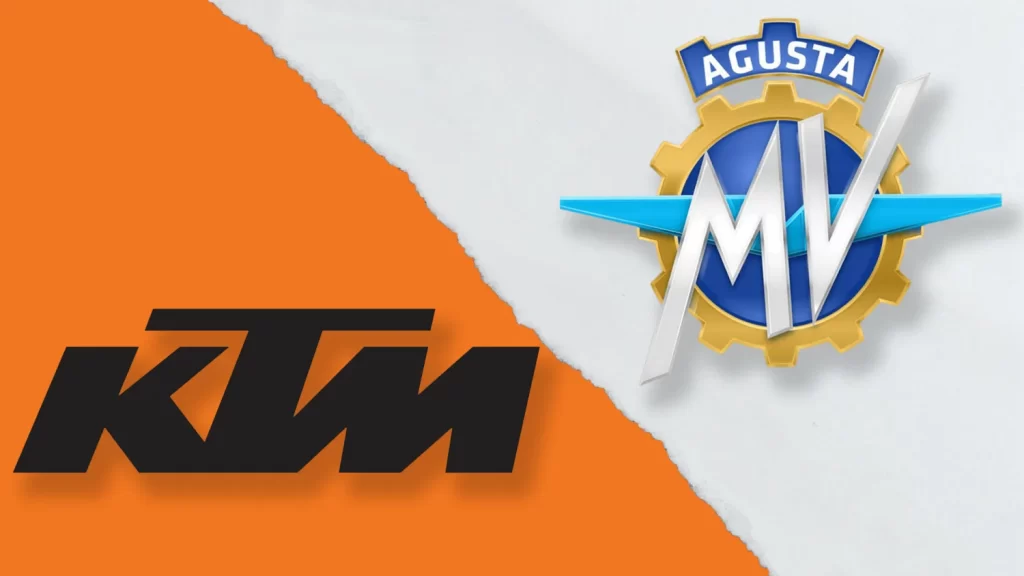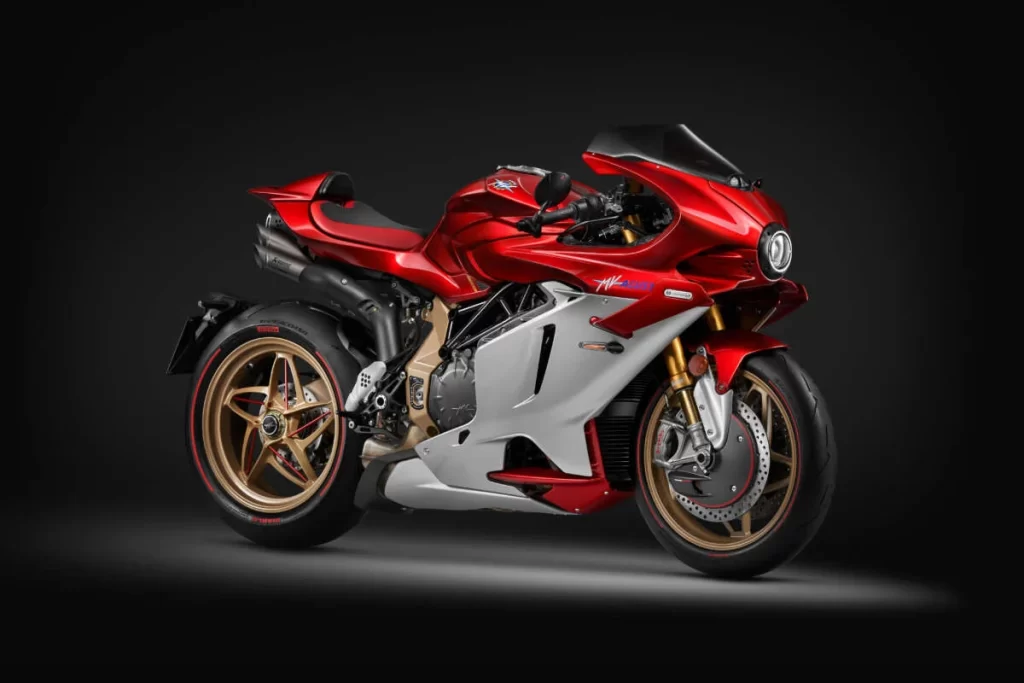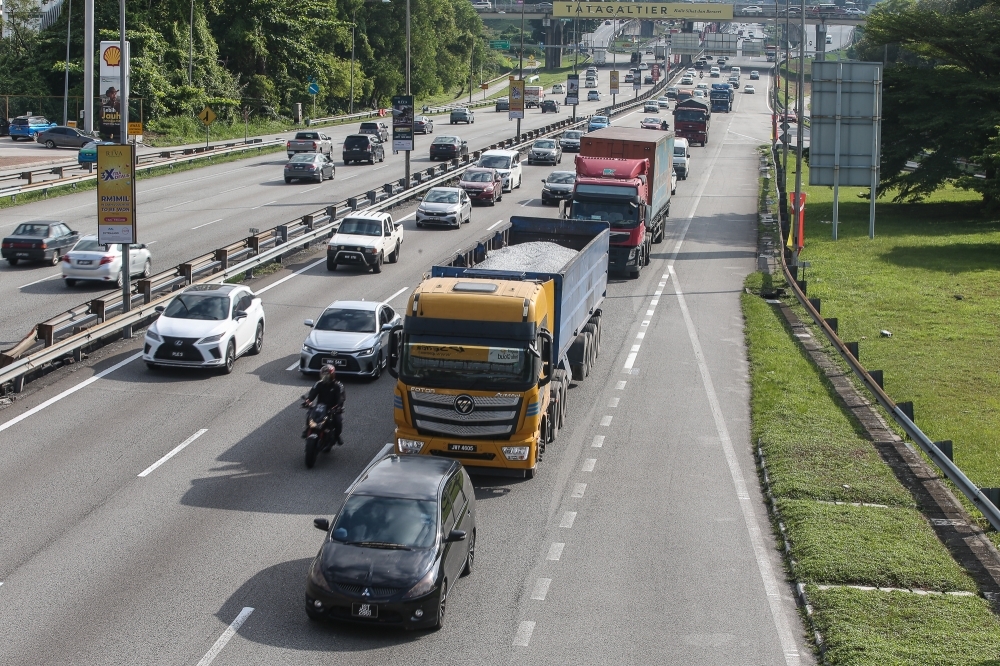The Bonneville Bobber became Triumph’s best-selling model when it was launched at the end of 2016. It has gone through several refreshers besides spawning the Triumph Factory Custom (TFC) model along the way. So, here is another Bobber TFC to usher in the new year, the 2025 Triumph Bobber TFC.
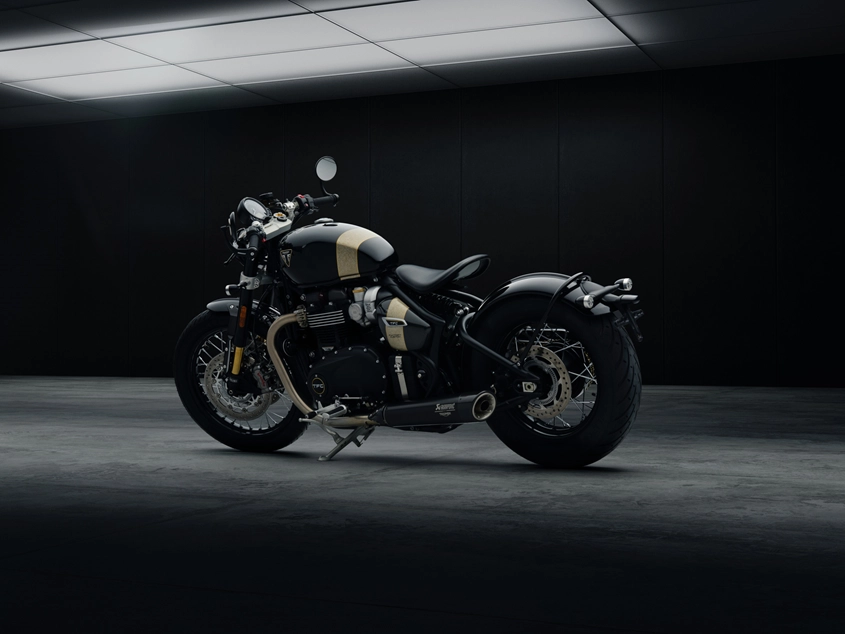
Of course, the TFC variant receives some high-end bling and components such as carbon fibre bodywork, two-tone gold black finish, retuned 1200cc engine, suspension, and electronics.
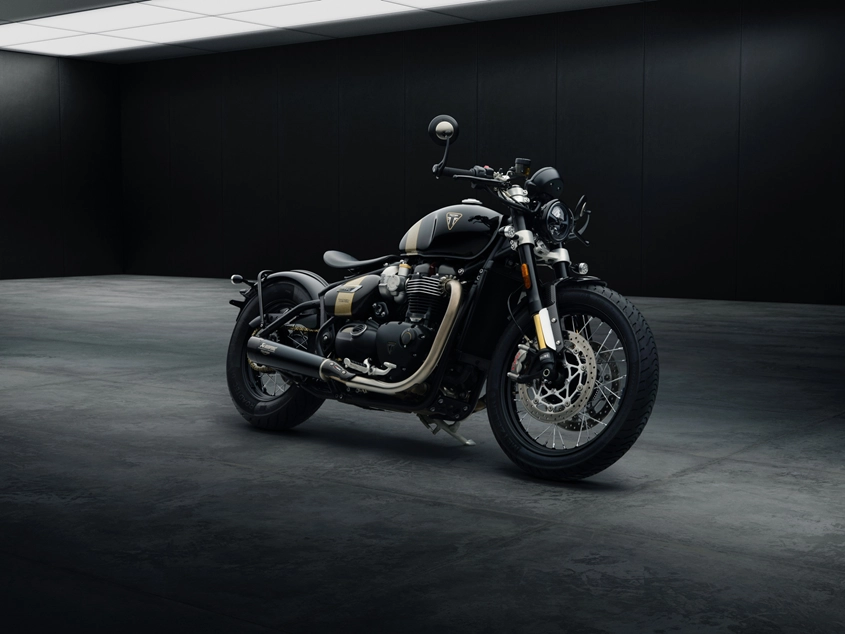
The engine’s mapping is more aggressive, moving the peak horsepower point down to 6,000 RPM from 7,000 RPM. Likewise, the peak torque of 106Nm was also moved to 3,750 RPM from 4,000 RPM. This is what is called a “cruiser” powerband – more tractable torque and power at lower RPMs. Capping off the performance shift, Triumph fitted a pair of Akrapovič silencers.
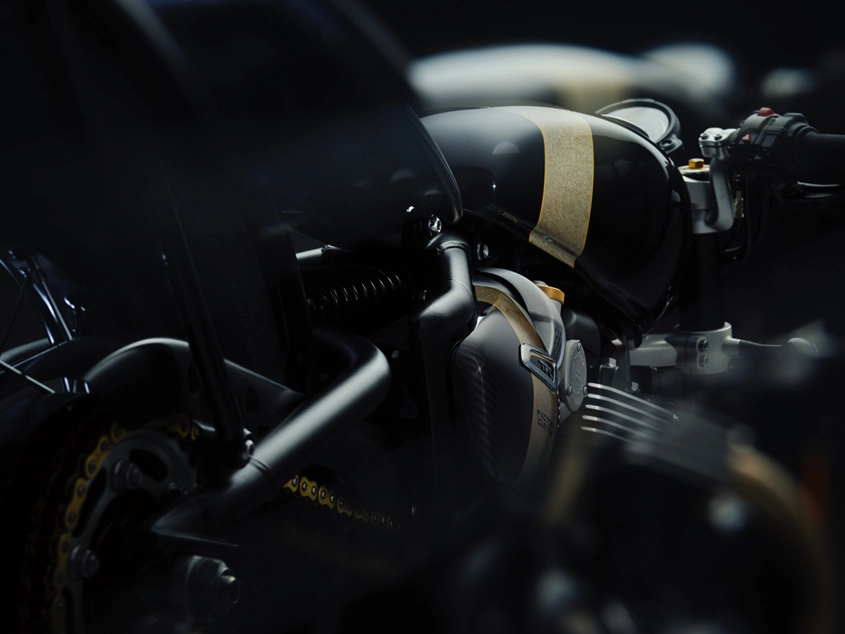
The 2025 Triumph Bobber TFC also receives Brembo M50 radially-mounted calipers, 310mm brake discs, and Brembo master cylinder. Up front are fully-adjustable Öhlins 43mm NIX 30 upside-down forks. The monoshock at the rear is adjustable for preload and rebound.
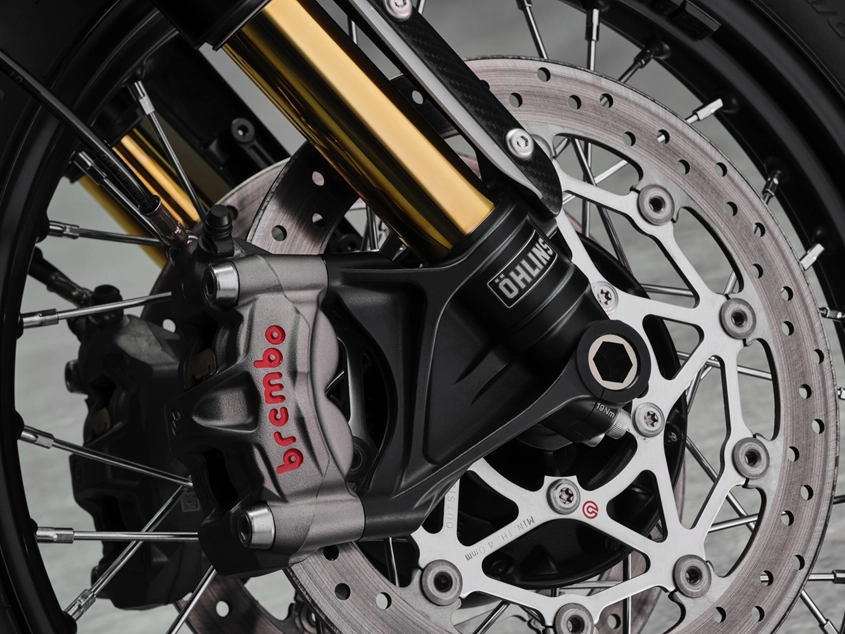
The standard Bobber has Road and Rain riding modes, so Triumph added a Sport mode for the TFC. The rear lights are integrated into the signal indicators. The front wheel is 19-inches and the standard handlebar is replaced with a clip-on type.
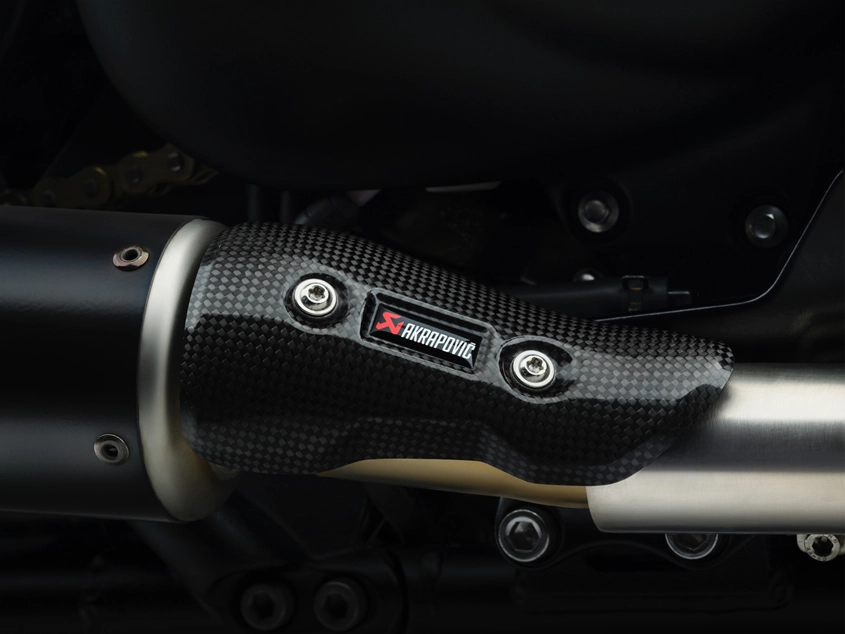
Apart from these, there are find hand-painted marble gold elements on the tank and side panels, with the underside of nine-litre fuel tank hand signed on the by the artist that painted it.
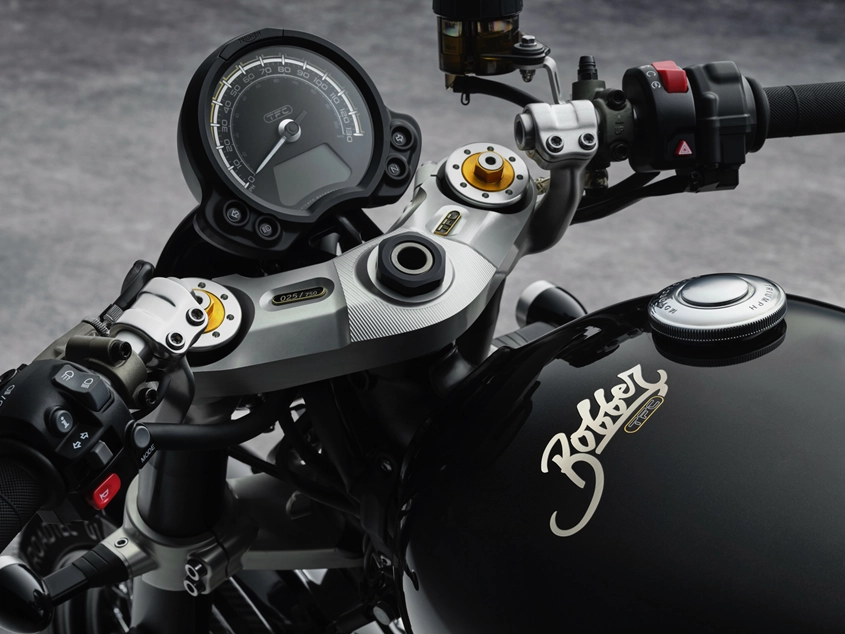
Other touches further include an embossed leather seat, carbon fibre mudguard stays, gold fork lowers, billet machined engine cover badges, and even a gold chain.
Price of the 2025 Triumph Bobber TFC in the UK is £17,195 (RM96,807.35) and it is limited to 750 units only.

